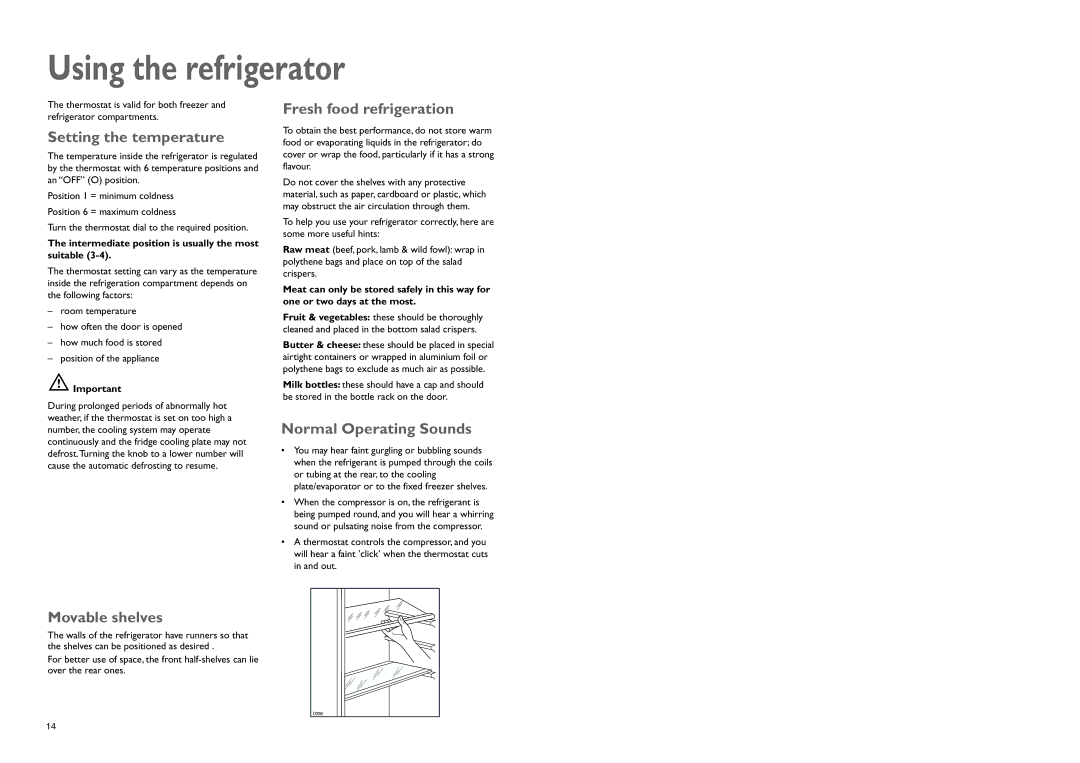JLBIFF 1802 specifications
The John Lewis JLBIFF 1802 is a highly regarded integrated fridge freezer, designed for modern households seeking efficiency, practicality, and aesthetic appeal. With a capacity that accommodates diverse storage needs, it provides a perfect balance between refrigeration and freezing, making it an ideal choice for families and individuals alike.One of the standout features of the JLBIFF 1802 is its generous storage space. The fridge section offers multiple adjustable shelves, allowing users to customize the interior layout according to their needs. The inclusion of door bins further maximizes organization, providing easy access to frequently used items like condiments and beverages. The crisp drawer is designed to maintain optimal humidity levels, ensuring that fruits and vegetables stay fresh for longer periods.
The freezer compartment is equally impressive. With ample space for frozen goods, the JLBIFF 1802 features transparent drawers that allow users to quickly identify contents without opening the drawers, minimizing temperature fluctuation and ensuring energy efficiency. The frost-free technology integrated into this model prevents the build-up of frost, saving users the hassle of manual defrosting while ensuring that food maintains its quality.
In terms of performance, the John Lewis JLBIFF 1802 is equipped with advanced cooling technologies. Its multi-air flow system efficiently circulates air throughout both the fridge and freezer sections, ensuring consistent temperatures and making it possible to store food at optimal conditions, which is essential for food preservation.
Energy efficiency is another notable characteristic; the JLBIFF 1802 is rated as energy-efficient, helping households to reduce their electricity bills and carbon footprint. With a sleek and modern design, it seamlessly fits into any kitchen decor, providing a blend of functionality and style.
The appliance is also designed with noise reduction in mind, ensuring quiet operation even in open living spaces. Additionally, the integrated design means that it can be hidden behind cabinet doors, offering a clean, streamlined aesthetic that complements contemporary kitchens.
In summary, the John Lewis JLBIFF 1802 is an exemplary integrated fridge freezer that combines ample storage with advanced technologies. It emphasizes convenience with features like frost-free technology and a multi-air flow system while being energy-efficient and aesthetically pleasing, making it a smart choice for modern kitchen environments.

